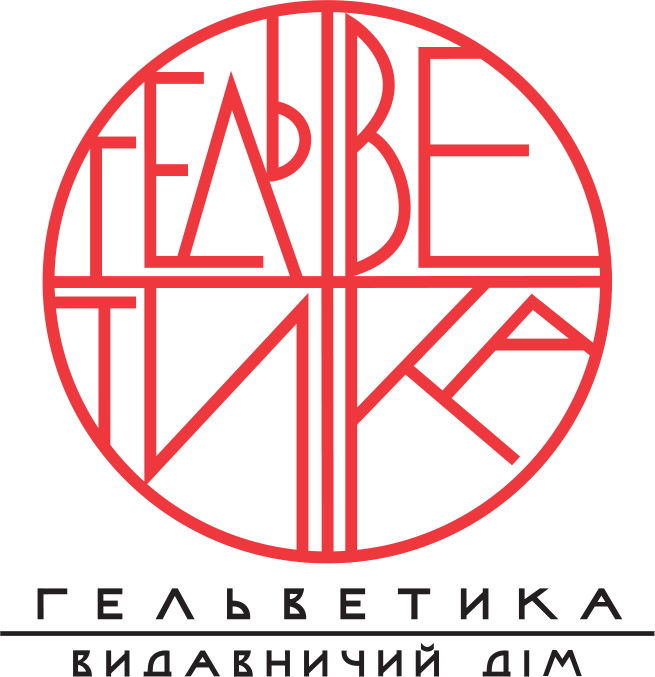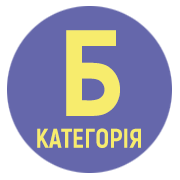СВИНЦЕВЕ ТА ЦИНКОВЕ БІЛИЛА: ЕВОЛЮЦІЯ МЕТОДІВ ВИРОБНИЦТВА ТА ХРОНОЛОГІЧНІ МЕЖІ ВИКОРИСТАННЯ У ТВОРАХ ЖИВОПИСУ
DOI:
https://doi.org/10.32782/uad.2025.1.1Ключові слова:
свинцеве білило, цинкове білило, живопис, пігменти, склад фарб, рентгенофлуоресцентний аналізАнотація
Метою роботи є вивчення історії розвитку методів виробництва свинцевого та цинкового білил, аналіз їхнього поширення у палітрі художників та визначення хронологічних меж використання цих пігментів у творах живопису XVI–XXI ст. Методологія статті базується на комплексному підході, що поєднав теоретико-методологічний та компаративний аналізи з технологічними методами дослідження. Показано, що еволюція у виробництві білих пігментів відбувалася під впливом впровадження нових технологій та винаходів у хімічній промисловості. Проведені дослідження дозволили встановити закономірності появи та поширення цинкового білила у художніх фарбах, прослідкувати влив урядових обмежень на використання свинцевого білила. Вперше на основі аналізу літературних даних та встановленому елементному складу білила понад 290 датованих живописних творів були визначені хронологічні межі використання свинцевого та цинкового білил у палітрі художників. Встановлено, що свинцеве білило залишалося основним білим пігментом до 1830-х рр. З 1850-х рр. починає використовуватися свинцево-цинкове білило, яке поширюється у живописі з 1860-х рр. Чисте цинкове білило ідентифікується у поодиноких творах з 1880-х рр. і стає домінуючим з кінця 1900-х рр. Попри заборону та обмеження використання у художній промисловості, чисте свинцеве білило виходить з ужитку лише наприкінці 1930-х рр., свинцево-цинкове та цинково-свинцеве білила залишаються поширеними до 1970-х рр., в окремих європейських країнах до 1990-х рр. Встановлено, що свинцеве білило дотепер обмежено виробляється рядом світових компаній для використання у реставраційній практиці. Отримані дані розширюють наукові знання щодо історії появи та поширення білих пігментів у живописі, що обумовлює актуальність роботи. Представлені у статті результати досліджень можуть бути використані при проведенні атрибуції та датуванні творів мистецтва.
Посилання
Андріанова О. Технологічні дослідження в структурі мистецтвознавчої експертизи. Український мистецтвознавчий дискурс : колективна монографія / За заг. ред. д. і. н. В. В. Карпова; НАКККіМ. Рига : Izdevnieciba «Baltija Publishing», 2020. С. 20–70.
Баті П. Анатомія кольору. Історія спадщини фарб та пігментів / Патрік Баті, пер. з англ. Наталії Боберської. Київ : Видавництво «ArtHuss», 2023. 368 с.
Кабінет Міністрів України. Про затвердження Технічного регламенту обмеження використання свинцю у лакофарбових матеріалах і сировинних компонентах : Постанова від 28 квітня 2021 р. № 432. URL: https://zakon.rada.gov.ua/laws/show/432-2021-п (дата звернення: 01.03.2025).
Auer G., Griebler W. D., Jahn В. White Pigments. Industrial Inorganic Pigments. 3rd ed. / Eds. G. Buxbaum and G. Pfaff. Weinheim : Wiley-VCH. 2005. P. 51–97.
Bacci M., Picollo M., Trumpy G., Tsukada M., Kunzelman, D. Non-invasive identification of white pigments on 20th-century oil paintings by using fiber optic reflectance spectroscopy. Journal of the American Institute for Conservation. 2007. Vol. 46, № 1. P. 27–37. DOI: 10.1179/019713607806112413.
Bijker I., Deleu N., Darcis Y., Janssens K., Van der Snickt G. In search for a new lead white: understanding the historical production processes for industrial-age lead white pigments (1740-1940). Dyes and Pigments. 2024. Vol. 235. 112566. DOI : 10.1016/j.dyepig.2024.112566.
Capogrosso V., Gabrieli F., Bellei S., Cartechini L., Cesaratto A., Trcera N., Rosi F., Valentini G., Comelli D., Nevin A. An integrated approach based on micromapping analytical techniques for the detection of impurities in historical Zn-based white pigments. Journal of Analytical Atomic Spectrometry. 2015. Vol. 30, № 3. P. 828–838. DOI : 10.1039/c4ja00385c.
Carlyle, L The artist’s assistant: oil painting instruction manuals and handbooks in Britain 1800–1900 with reference to selected eighteenth-century sources, London : Archetype Publications. 2001. 589 р.
Casadio F., Keune K., Noble P., Van Loon A., Hendriks E., Centeno S., Osmond G. (eds) Metal soaps in art. Cham, Switzerland : Springer, 2019. 424 p. DOI : 10.1007/978-3-319-90617-1.
Clarke M. A Nineteenth-Century Colourman’s terminology. Studies in Conservation, 2009. Vol. 54, № 3. P. 160–169. DOI : 10.1179/sic.2009.54.3.160.
Clifford D.H. The Lead and Zinc Pigments. John Wiley and Sons, New York. 1909. 364 р.
Cornelissen & Son. Flake White Pigment [Електронний ресурс]. URL: https://www.cornelissen.com/pigments-gums-and-resins/artists-quality-pigments-whites/flake-white-pigment.html (дата звернення: 01.03.2025).
Council of the European Communities. Council Directive 89/677/EEC of 21 December 1989 amending for the eighth time Directive 76/769/EEC on the approximation of the laws, regulations and administrative provisions of the Member States relating to restrictions on the marketing and use of certain dangerous substances and preparations. Official Journal of the European Communities, L 398, 19–23. URL: https://eur-lex.europa.eu/legal-content/EN/TXT/?uri=CELEX:31989L0677 (дата звернення: 01.03.2025).
Eastaugh N., Walsh V., Chaplin T., Siddall R. Pigment Compendium: A Dictionary and Optical Microscopy of Historical Pigments.London: Routledge, 2008. 960 р. https://doi.org/10.4324/9780080943596
Gettens R. J., Kühn H., Chase W. Th. Lead white. Artists’ Pigments. A Handbook of Their History and Characteristics. Vol. 2 / Ed. Ashok Roy. Washington : National Gallery of Art, New York, Oxford : Oxford University Press. 1993. P. 67–81.
Gliozzo E., Ionescu C. Pigments–Lead-based whites, reds, yellows and oranges and their alteration phases. Archaeol Anthropol Sci. 2022. Vol.14, № 1. 17. 66 p. DOI : 10.1007/s12520-021-01407-z.
Gomes M. Investigating surface treatments and coatings, their history, application and detection on selected pigments: Lead White, Zinc White and Titanium White: : Master’s Diss. / Universidade Nova de Lisboa, Lisbon, Portugal. 2018. 68 p.
Gonzalez V., Calligaro T., Wallez G., Eveno M., Toussaint K., Menua M. Composition and microstructure of the lead white pigment in masters paintings using HR Synchrotron XRD. Microchemical Journal. 2016. Vol. 25. P. 43–49. DOI: 10.1016/j.microc.2015.11.005.
Gooch J. W. Lead-Based Paint Handbook. Topics in Applied Chemistry. Boston, MA : Springer. 2002. 305 p.
Homburg E., De Vlieger J. H. A victory of practice over science: The unsuccessful Modernisation of the Dutch white lead industry (1780–1865). History and Technology. 1996. Vol. 13, № 1. P. 33–52. DOI: 10.1080/07341519608581894.
International Labour Organization. White Lead (Painting) Convention, 1921 (No. 13). URL: https://treaties.un.org/doc/Publication/UNTS/Volume%2038/volume-38-I-596-English.pdf (дата звернення: 01.03.2025).
Izzo F. C., Kratter M., Nevin A., Zendri E. A critical review on the analysis of metal soaps in oil paintings. ChemistryOpen. 2021. Vol. 10, № 9. P. 904–921. DOI : 10.1002/open.202100166.
Johnson S., Saikia N., Sahu R. Lead in paints. New Delhi, India : Centre for Science and Environment, and Pollution Monitoring Laboratory. 2009. 32 р.
Johnson V. Ultraviolet-induced fluorescence and photo-degradation in zinc oxide watercolour paints: Ph.D. diss. / Northumbria University. Newcastle Upon Tyne, United Kingdom, 2020. 224 p. URL: http://nrl.northumbria.ac.uk/id/eprint/44076/ (дата звернення: 30.12.2024).
Johnson V., Colbourne J., Nicholson K.. A Digital Imaging Tool for Identifying Photoactive Zinc Oxide Watercolor Pigments. The Book and Paper Group Annual of the American Institute for Conservation of Historic and Artistic Works. 2021. Vol. 40. P.27–43.
Jolly J. H. Materials flow of zinc in the United States 1850–1990. Resources, Conservation and Recycling. 1993. Vol. 9, № 1–2. P. 1–30. DOI : 10.1016/0921-3449(93)90031-A.
Kremer Pigmente. Cremnitz White. URL: https://www.kremer-pigmente.com/en/shop/pigments/46000-cremnitz-white.html (дата звернення: 01.03.2025).
Kuhn H. Zinc oxide. Artists’ pigments: a handbook of their history and characteristics. Vol. 1. / Ed. Robert L. Feller. Washington : National Gallery of Art, New York, Oxford : Oxford University Press, 1986. P. 169–186.
Learner T. Modern paints uncovered: proceedings from the modern paints uncovered symposium. Getty Publications, 2007. 317 p.
Lestel L. The Banning of White Lead French and International Regulations. Hazardous Chemicals: Agents of Risk and Change, 1800–2000 / Eds. E. Homburg and E. Vaupel. New York, Oxford : Berghahn Books, 2019. p.87–106. DOI : 10.1515/9781789203202-006.
Michael Harding. Cremnitz White No. 1 (Linseed Oil) URL: https://www.michaelharding.co.uk/materials/cremnitz-white-no-1-linseed-oil/ (дата звернення: 01.03.2025).
Michael Harding. Stack Lead White. URL: https://www.michaelharding.co.uk/materials/stack-leadwhite/ (дата звернення: 01.03.2025).
Moezzi A. Zinc oxide: new insights into a material for all ages: Ph.D. diss / University of Technology Sydney. Sydney, Australia, 2012. 266 р.
Moezzi A., McDonagh A. M., Cortie M. B. Zinc oxide particles: Synthesis, properties and applications. Chemical engineering journal. 2012. Vol. 185–186. P. 1–22. DOI : 10.1016/j.cej.2012.01.076.
Mushak P. A Brief Early History of Lead as an Evolving Global Pollutant and Toxicant. Mushak P. Lead and Public Health: Science, Risk and Regulation. Amsterdam ; Boston : Elsevier. 2011. P. 23–39. doi: 10.1016/b978-0-444-51554-4.00002-x.
Natural Pigments. Lead White #1 Oil Paint. URL: https://www.naturalpigments.com/lead-white-1-oilpaint.html (дата звернення: 01.03.2025).
Natural Pigments. Lead White #2 Oil Paint. URL: https://www.naturalpigments.com/lead-white-2-oilpaint.html (дата звернення: 01.03.2025).
Natural Pigments. Lead White Pigment. URL: https://www.naturalpigments.com/lead-white-pigment.html (дата звернення: 01.03.2025).
Olby J. K. The basic lead carbonates. Journal of Inorganic Nuclear Chemistry. 1966. Vol. 28, № 11. P. 2507–2512. DOI :10.1016/0022-1902(66)80373-1.
Osmond G. Zinc white and the influence of paint composition for stability in oil based media. Issues in contemporary oil paint / Eds. A. Burnstock, M. de Keijzer, J. Krueger, T. Learner, A. de Tagle, G. Heydenreich, K. J. van den Berg. Cham : Springer, 2014. P. 263–281. DOI : 10.1007/978-3-319-10100-2_18.
Osmond G. Zinc white: a review of zinc oxide pigment properties and implications for stability in oilbased paintings. AICCM Bulletin. 2012. Vol. 33, №. 1. P. 20–29. DOI : 10.1179/bac.2012.33.1.004.
Palladino N., Occelli M., Wallez G., Coquinot Y., Lemasson Q., Pichon L., Stankic S., Etgens V., Salvant J. An analytical survey of zinc white historical and modern artists’ materials. Heritage Science. 2024. Vol. 12. 47. DOI : 10.1186/s40494-023-01082-4.
Pfaff G. Inorganic Pigments. Berlin : Walter de Gruyter GmbH. 2023. 390 р.
Picollo M., Bacci M., Magrini D., Radicati B., Trumpy G., Tsukada M., Kunzelman D. Modern white pigments: their identification by means of noninvasive ultraviolet, visible, and infrared fiber optic reflectance spectroscopy. Modern Paints Uncovered : Proceedings From the Modern Paints Uncovered Symposium, Tate Modern, London, May 16–19, 2006. Los Angeles : Getty Publications. 2007. P. 118–128.
Polkownik C., Emmett T. A technical examination of the nature and significance of prismatic lead white. Journal of the Institute of Conservation. 2020. Vol. 43, № 2. P. 174–186. DOI :10.1080/19455224.2020.1753793.
Robinson A. The Regulation of Lead White Paint in Conservation and Artistic Practice. Studies in Conservation. 2024. Vol. 69, № 8. P. 635–650. DOI : 10.1080/00393630.2023.2293611.
Rogala D. V. Everything old is new again: revisiting a historical symposium on zinc oxide paint films. Metal soaps in art: conservation and research / Eds. F. Casadio, K. Keune, P. Noble, A. Van Loon, E. Hendriks, S. Centeno, G. Osmond. Cham, Switzerland : Springer; 2019. p. 317–330.
Spennemann D. H. R. Stanislas Sorel’s zinc-based paints. Transactions of the IMF. 2020. Vol. 98, № 1. P. 8–13. DOI : 10.1080/00202967.2020.1698858.
Stieg F. B. Opaque white pigments in coatings. Applied Polymer Science. 1985. Vol. 285. P. 1249–1269. DOI: 10.1021/bk-1985-0285.ch052.
Stols-Witlox M. ‘The heaviest and the whitest’: lead white quality in north western European documentary sources, 1400-1900. Studying old master paintings: technology and practice / Ed. M. Spring. London : Archetype Publications. 2011. P. 284–294.
Stols-Witlox M. Historical recipes for preparatory layers for oil paintings in manuals, manuscripts and handbooks in North West Europe, 1550–1900: Analysis and reconstructions: Doctoral dissertation / University of Amsterdam, Amsterdam, Netherlands. 414 p. URL: https://dare.uva.nl/search?identifier=d857e372-47a7-4afe-aa70-df209368ee9d.
Stols-Witlox M., Megens L., Carlyle L. ‘To prepare white excellent…’: reconstructions investigating the influence of washing, grinding and decanting of stack-process lead white on pigment composition and particle size. The artist's process: technology and interpretation / Eds. S. Eyb-Green; J. H. Townsend, M. Clarke, J. Nadolny, S. Kroustallis. London : Archetype. 2012. P. 112–129.
Thompson D. V. The materials and techniques of medieval painting. New York : Dover Publications, 1956. 239 p.
Townsend J., Carlyle L., Khandekar N., Woodcock S. Later nineteenth century pigments: evidence for additions and substitutions. The Conservator. 1995. Vol. 19. P. 65–78. DOI : 10.1080/01410096.1995.9995096.
Van Driel B. A., van den Berg K.J., Gerretzen J., Dik J. The white of the 20th century: an explorative survey into Dutch modern art collections. Heritage Science. 2018. Vol. 6. 16. DOI : 10.1186/s40494-018-0183-4.
Wachowiak M., Żmuda-Trze-biatowska I., Trykowski G. White, yellow and green pigments on Polish artist’s palettes in the period 1838-1938. Laser in Conservation of Artworks : Proceedings in 11th Lacona Conference on Lasers in the Conservation of Artworks, Krakow, Poland, 19–23 September, 2016. Toruń : NCU Press. 2017. P.293–306. DOI: 10.12775/3875-4.21.
World Health Organization. Childhood lead poisoning. WHO. 2010. 72 p. URL: https://iris.who.int/bitstream/handle/10665/136571/9789241500333_eng.pdf?sequence=1 (дата звернення: 01.03.2025).
World Health Organization. Update on the global status of legal limits on lead in paint. WHO. 2022. 28 p. URL: https://iris.who.int/bitstream/handle/10665/363336/978924005002-eng.pdf?sequence=1. (дата звернення: 01.03.2025).
Yan M. F. Zinc Oxide. Concise Encyclopedia of Advanced Ceramic Materials. 1991, P. 523–525. DOI :10.1016/b978-0-08-034720-2.50144-1.
Yates W. R. Samuel Wetherill, Joseph Wharton, and the Founding of the American Zinc Industry. The Pennsylvania Magazine of History and Biography. 1974. Vol. 98, № 4. P. 469-514. URL: https://www.jstor.org/stable/20090901 (дата звернення: 01.03.2025).



